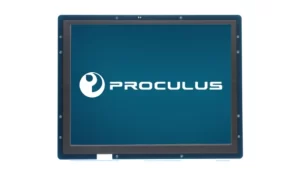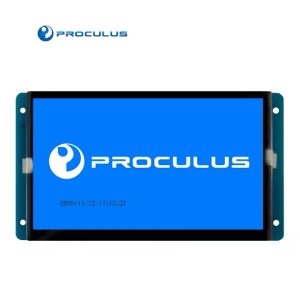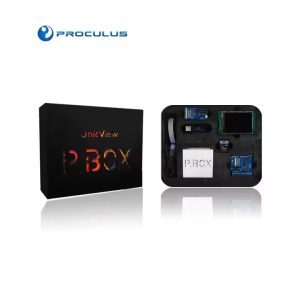Types of Monitors: Features, Pros & Cons, and Best Uses
Understanding the different types of monitor is essential when it comes to selecting the right display for your needs.
Whether you’re an avid gamer, a professional content creator, or simply someone in need of a reliable screen for everyday use, knowing the strengths and drawbacks of each type of monitor can help you make the best choice.
Monitors are no longer one-size-fits-all. Today, there’s a wide variety of options, from high-resolution panels to ultra-fast refresh rates.
In this guide, we’ll explain key monitor types, highlighting their strengths, weaknesses, and best use cases for developers like you.
By the end, you’ll be equipped with the knowledge to make an informed decision on the right display for your project, whether you’re coding, debugging, or visualizing your work.

 Android displays are essentially screens integrated with Android’s operating system, allowing devices to run applications, display content, and provide an interactive user experience.
The primary difference between traditional monitor types (like LCD, IPS, AMOLED, etc.) and Android displays lies in their functionality.
While traditional monitors are designed for static or limited interactivity (mainly displaying images or videos from a connected device), Android displays feature built-in operating systems, allowing users to run apps, connect to networks, and perform various tasks directly on the screen.
Some key differences include:
Android displays are essentially screens integrated with Android’s operating system, allowing devices to run applications, display content, and provide an interactive user experience.
The primary difference between traditional monitor types (like LCD, IPS, AMOLED, etc.) and Android displays lies in their functionality.
While traditional monitors are designed for static or limited interactivity (mainly displaying images or videos from a connected device), Android displays feature built-in operating systems, allowing users to run apps, connect to networks, and perform various tasks directly on the screen.
Some key differences include:
 Selecting the best type of monitor for your specific needs is crucial for achieving the best performance and visual experience.
Here are the key factors to consider when making your decision:
Selecting the best type of monitor for your specific needs is crucial for achieving the best performance and visual experience.
Here are the key factors to consider when making your decision:
What are the main types of monitors?
Monitors come in various types, each designed to meet different needs and preferences. Whether you’re working on a creative project, gaming, or using a monitor for professional or everyday use, understanding the differences can help you choose the best display for your needs. The most common monitor types today include LCD, IPS, AMOLED, LED, OLED, QLED and Plasma. Each monitor type has its own strengths and is suited for specific tasks, from general computing and watching movies to professional content creation. Understanding these types will help you make an informed decision when selecting a monitor that aligns with your project or personal needs.LCD Displays
The LCD monitor module is one of the most popular types worldwide, thanks to its mature technology and excellent cost-effectiveness. LCD monitors are commonly used in devices like calculators, smartphones, tablets, TVs, and smart displays. LCD stands for Liquid Crystal Display, referring to the use of liquid crystals to control light and display images. These crystals, which have properties between liquid and solid, are sandwiched between two layers of polarized glass. When aligned, they block light from behind the screen, which is typically provided by a backlight. The liquid crystals act as filters, allowing light to pass through or blocking it to create color and darkness in the pixels. As a result, LCD monitors do not generate their own light but rely on backlighting, making them energy-efficient.Main use
LCD monitors are economically priced and pose no risk of frozen or static images, making them suitable for activities that require a high graphic level. In addition, they are lightweight and available in a wide variety of sizes, allowing for different types of integration. The main uses of LCDs range from traditional monitors for computers and televisions, to the production of instrument panels, such as:- Paramedic monitors;
- Treadmills;
- Ultrasound machines;
- Automation equipment;
- Dashboards and industrial supervisors;
- Onboard monitors;
- Aircraft cockpit;
- Plant monitors.

IPS Displays
The IPS panel (In-Plane Switching) is similar to the LCD, and is also present on the screen of devices such as smartphones, televisions and monitors in general. In this case, the difference in IPS technology is in the positioning of the liquid crystals, which are aligned in a horizontal plane. High-end IPS panels can achieve refresh rates up to 240Hz, though most standard IPS displays operate at 60-144Hz. Due to these characteristics, IPS offers benefits to those who are primarily looking for fast image reproduction.Main uses
IPS screens are used in the same way as LCD screens. They are present in equipment monitors, control panels and other commercial equipment. Despite this, this type of screen technology is usually applied more in TV sets, notebooks and smartphones.AMOLED Displays
AMOLED, or Active-Matrix Organic Light-Emitting Diode, is an OLED-based technology. The OLED pixels are connected to a device called a Thin Film Transistor, which is located on the glass of the screens, and has several semiconductors, insulators and metallic contacts.. The TFT forms a matrix with several pixels that light up or not through electrical activation. In practice, AMOLED screens are thin and allow a fluid display of images. They also offer more intense lighting than other models. Another important feature is the high contrast level, which provides sharper colors and darker blacks.Main uses
The main benefit of AMOLED screens is superior image visibility regardless of viewing angle. Because of this, like IPS, they are mainly applied to devices where the focus of use is on visualization, such as computers, cell phones and TVs.LED Displays
LED monitors, which are LCD screens with LED backlighting, are known for having thin screens, good durability and low power consumption. LED-backlit displays typically offer improved (faster) response times compared to older CCFL-backlit LCD models, resulting in clearer motion with less blur. Another disadvantage of LED screens is the high production cost, which impacts the final price of the product offered to the consumer.Main uses
LED screens and monitors can make sense in activities that do not demand high quality graphics. Despite this, the material’s high price ends up making it disadvantageous compared to LCDs, for example.OLED displays
OLED (Organic Light Emitting Diode) technology uses organic compounds that emit light when electricity is applied. This allows for deeper blacks and superior contrast, as each pixel is individually lit and can be turned off completely.Main uses
OLED displays are widely used in high-end smartphones, TVs, and digital signage. They offer excellent color accuracy and high contrast, making them ideal for media consumption like watching movies or playing games. Their flexibility also makes them suitable for curved or foldable screens.QLED displays
QLED (Quantum Dot LED) is a technology that uses quantum dots combined with an LED backlight to produce brighter, more vibrant colors. The result is a display with higher brightness levels and better color accuracy, especially in brightly lit rooms.Main uses
QLED displays are commonly used in high-quality televisions, especially for home entertainment systems. They are also found in some high-end monitors, offering vibrant colors and excellent brightness for professional media creation or gaming.Plasma displays
Plasma displays use electrically charged gas to excite phosphors that emit light, creating images with great color richness and excellent contrast. However, they consume more power and are thicker than newer technologies like LED or OLED.Main uses
Plasma displays use electrically charged gas to excite phosphors that emit light, creating images with incredible color richness and excellent contrast. However, they consume more power and are thicker than newer technologies like LED or OLED.You may also like Capacitive touch vs resistive touch: differences & how to choose
And what changes these types of monitors for an Android Display?
 Android displays are essentially screens integrated with Android’s operating system, allowing devices to run applications, display content, and provide an interactive user experience.
The primary difference between traditional monitor types (like LCD, IPS, AMOLED, etc.) and Android displays lies in their functionality.
While traditional monitors are designed for static or limited interactivity (mainly displaying images or videos from a connected device), Android displays feature built-in operating systems, allowing users to run apps, connect to networks, and perform various tasks directly on the screen.
Some key differences include:
Android displays are essentially screens integrated with Android’s operating system, allowing devices to run applications, display content, and provide an interactive user experience.
The primary difference between traditional monitor types (like LCD, IPS, AMOLED, etc.) and Android displays lies in their functionality.
While traditional monitors are designed for static or limited interactivity (mainly displaying images or videos from a connected device), Android displays feature built-in operating systems, allowing users to run apps, connect to networks, and perform various tasks directly on the screen.
Some key differences include:
- Software Integration:android displays come with a pre-installed operating system that enables them to run apps and provide a more interactive experience;
- Touchscreen Capability:many Android displays are also touch-enabled, making them highly versatile for kiosks, digital signage, and mobile-like devices;
- Connectivity:Android displays often include wireless connectivity options like Wi-Fi and Bluetooth, allowing for direct integration into a wider digital ecosystem without needing a separate device.
How to choose the best type of monitor for the project?
 Selecting the best type of monitor for your specific needs is crucial for achieving the best performance and visual experience.
Here are the key factors to consider when making your decision:
Selecting the best type of monitor for your specific needs is crucial for achieving the best performance and visual experience.
Here are the key factors to consider when making your decision:
Determine the purpose
Start by understanding the monitor’s primary function. Are you using it for casual entertainment, professional work, gaming, or industrial applications? The purpose will greatly influence your choice:- Casual Use:if you’re using the monitor for browsing the web, streaming content, or office tasks, a basic LCD or LED display might be sufficient;
- Creative Work:For tasks like photo and video editing, a monitor with accurate color reproduction, such as an IPS or OLED display, would be ideal;
- Gaming:For gaming, focus on monitors with fast refresh rates and low response times, such as high-end IPS, OLED, or even LED displays with gaming-specific features;
- Industrial/Commercial Use:If the monitor is for industrial or outdoor use, look for rugged displays that can withstand harsh conditions and have high brightness levels.
Select the right panel technology
Choosing the correct panel technology depends on color accuracy, response time, and viewing angles. Each panel technology has its strengths and weaknesses:- LCD:Affordable and widely available, ideal for everyday tasks but lacking the color vibrancy of more advanced technologies;
- IPS:Best for professional work like photography and graphic design due to superior color accuracy and wide viewing angles;
- AMOLED:Offers deeper blacks and higher contrast, making it excellent for watching movies or gaming in dark environments;
- OLED:Known for vibrant colors and true blacks, suitable for high-end entertainment and design work;
- LED:Thin and energy-efficient, but typically lacks the visual quality of higher-end panel types.
You may also like HMI Screen Design: What It Is and How to Choose the Best Software
Choose the right resolution
Resolution refers to the number of pixels on the screen and directly impacts image clarity. Common resolutions include:- 1080p (Full HD):A good choice for general use, including streaming, gaming, and office work;
- 1440p (Quad HD):Offers better image sharpness for creative professionals and gamers who want higher quality without going all the way to 4K;
- 4K (Ultra HD):Perfect for professional work, video editing, and high-end gaming, offering incredible detail and clarity.
Consider refresh rate & response time
The refresh rate (how often the image on the screen is updated per second) and response time (how quickly pixels change color) are essential for fast-moving content like gaming or video editing:- Refresh Rate:For a smooth experience in fast-paced games, a higher refresh rate (120Hz or above) is recommended;
- Response Time:A low response time (measured in milliseconds) is crucial for gaming, where quick movements and transitions are key.
Consider connectivity & ergonomics
Don’t overlook connectivity options and ergonomics, as they are vital for ease of use and comfort:- Connectivity:Ensure the monitor has the right ports for your devices (HDMI, DisplayPort, USB-C) and supports additional features like Bluetooth or Wi-Fi if needed. For modern setups, USB-C and HDMI 2.0 or higher are essential;
- Ergonomics:A monitor with adjustable height, tilt, and swivel options allows you to set it up comfortably. Additionally, look for models that reduce eye strain, such as those with flicker-free technology and blue light reduction.
Understand the available budget
Finally, consider your budget. Monitors can vary widely in price, with premium models offering cutting-edge features like OLED displays, high resolutions, and faster refresh rates. However, more budget-friendly options, like standard LCD monitors, still provide excellent performance for general use. Balancing your needs with your budget is key, as you may need to make trade-offs based on what’s most important for your specific tasks.Find the best monitors with Proculus Technologies
When searching for high-quality monitors, Proculus Technologies offers a wide range of reliable and advanced display solutions that can elevate your project. Whether you need LCD screens, touch-enabled displays, or custom modules for unique applications, Proculus provides top-notch products designed to meet various industrial, commercial, and personal needs. Proculus specializes in cutting-edge TFT LCD modules, offering excellent brightness, clarity, and energy efficiency. With customizable options, these modules are ideal for use in everything from embedded systems to interactive displays and high-performance electronics. Our displays are built to handle a variety of environments, ensuring optimal performance in sectors like automation, healthcare, industrial controls, and more. Proculus Technologies is the go-to source for high-quality and customizable monitors that combine the latest display technology with the durability and flexibility needed for diverse applications. Check out our full range of products to explore all available options and find the perfect fit for your needs..Unlock advanced display solutions with Proculus! Check out our customizable TFT LCD modules today!
Conclusion
Choosing the right type of monitor depends on various factors such as your project’s specific needst, your budget, and the technical specifications you’re looking for. Whether you need a high-end display for graphic design, a durable industrial monitor, or a cost-effective solution for everyday use, understanding the differences between LCD, IPS, AMOLED, LED, OLED, QLED, and Plasma displays will help you make a well-informed decision. Proculus Technologies offers high-quality and customizable options for projects requiring advanced display solutions. It delivers exceptional performance, great visual clarity, and long-lasting durability. By selecting the right monitor technology, you can ensure your project succeeds with a display that meets your needs, whether you’re designing interactive systems, building industrial machines, or simply upgrading your personal setup. No matter the use case, remember that Proculus Technologies is here to provide reliable and state-of-the-art display modules that can bring your ideas to life.
Category:
Author:
Client:
Date:
Related products
PHP Code Snippets Powered By : XYZScripts.com
 English
English


